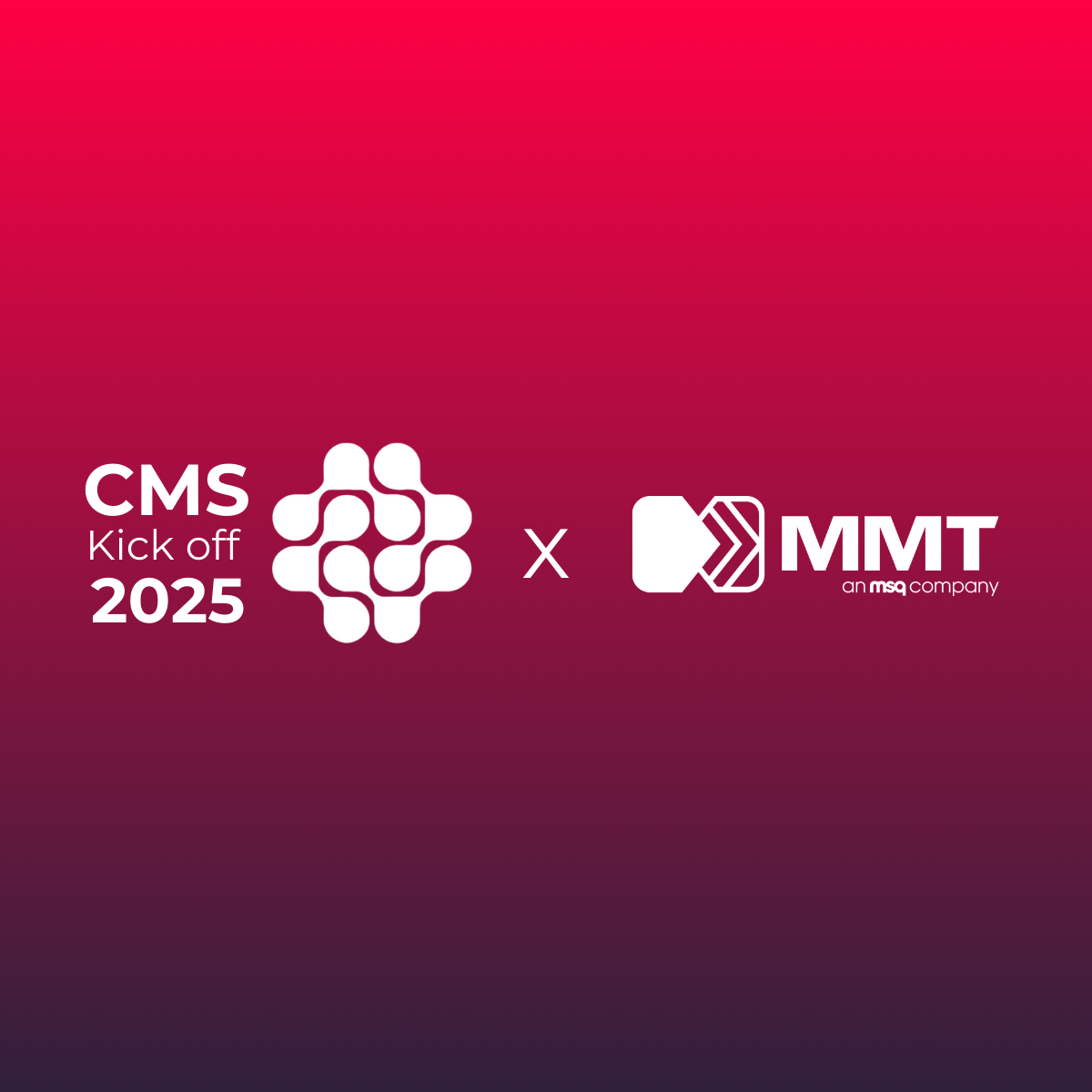We recently launched our new Agile Maturity Index (AMI) and began our five-part blog series focussing on the first three foundational pillars, High Performing Teams, Process & Governance and Technology. In this fourth blog in the series, we’ll focus on the Organisational Agility pillar.
Those first three foundational pillars are crucial in developing a high performing, scaled agile engineering capability. However, companies can only get so far if the organisation hasn’t reshaped many of its traditional processes and approaches to portfolio management to support this new capability.
Without this in place we often see the classic markers of a company who has an excellent technical capability (e.g. around Continuous Delivery processes) but actual speed to market for new initiatives is still very slow. This erodes the benefits of the capability and frustrates the engineering teams, ultimately leading to low morale and higher churn of critical technology staff.
Running on Workbench, the organisational insights platform developed by Temporall, the Agile Maturity Index allows us to surface data and draw insights about an organisation’s agile leadership, culture and lean product management capability as well as how effectively they have been able to scale their agile processes.
Again, starting from the top level we can see that our starting point in this example is a set of relatively average scores across these areas within our Organisational Agility macro attribute. Over time we’ll be tracking the trends of these quantitative scores as we can’t draw insight until we drill into the detail.
For example, does the whole product team feel they are only performing averagely or is there a broad distribution of scores? How does this differ by region or, perhaps more importantly, between the agile teams and the leadership team’s perception of these capabilities?
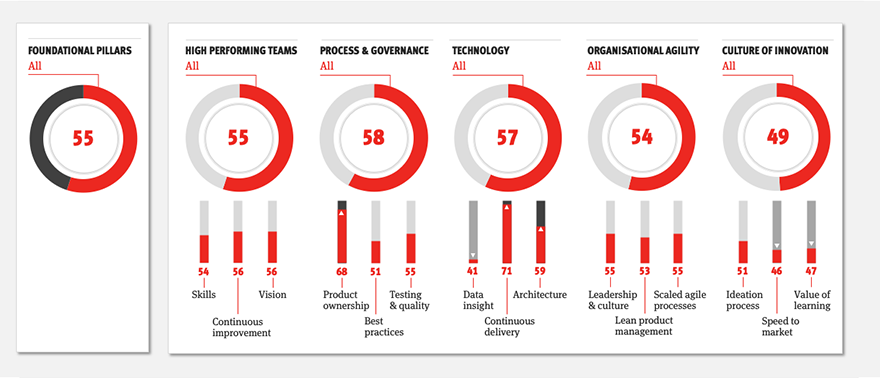
Interestingly, when we map sentiment (derived from AI analysis of the comments from the initial survey) as well as the scores we can see variance between the three micro attributes within the organisational agility macro attribute:
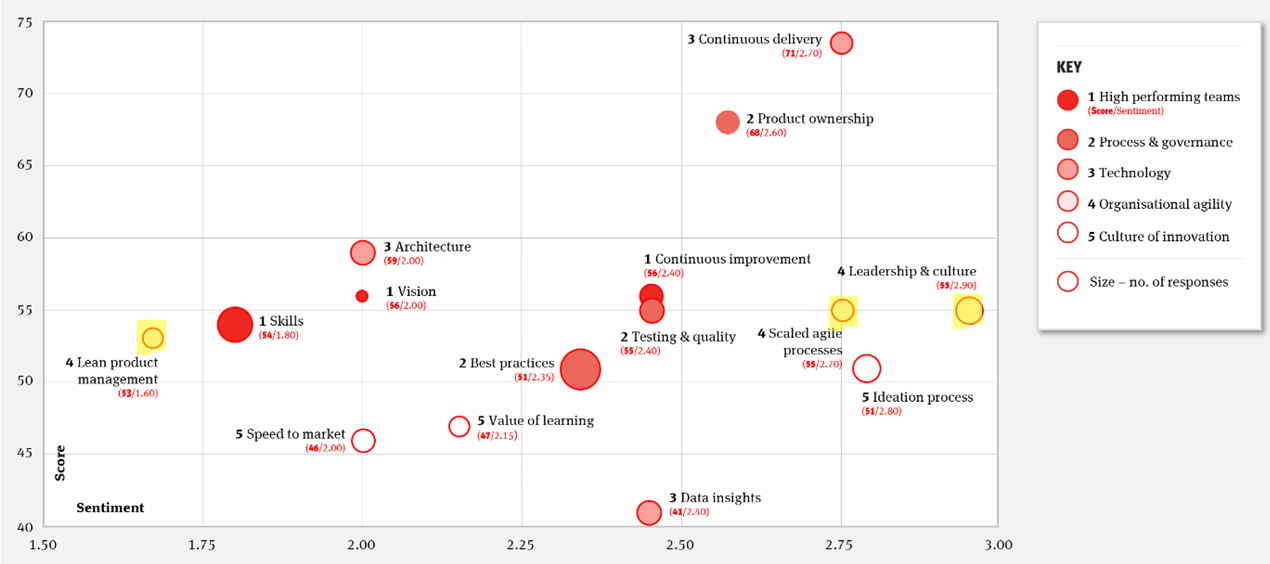
The teams are relatively positive in their sentiment about leadership and culture as well as the effectiveness of the scaling of the agile processes. However, in a signal that is very typical of an enterprise still maturing around an agile engineering capability, the sentiment around Lean Product Management is the lowest scoring.
When we drill into the data a little further, we can start to see where the problems lie and draw useful insight on where and how to help the organisation improve:
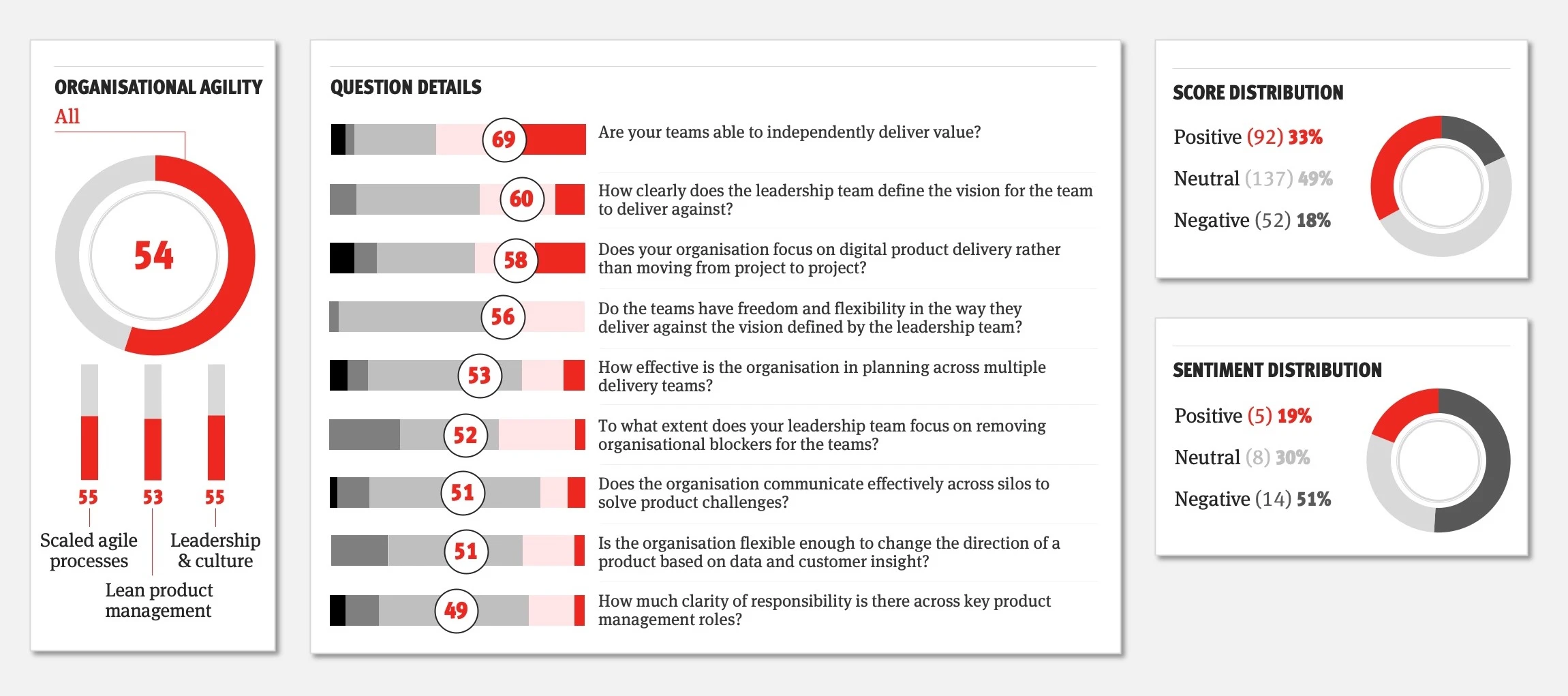
In this case, whilst the organisation and leadership teams are generally fairly good at defining a vision for the teams and working with a more ongoing product strategy (rather than a traditional project mentality) the teams are flagging that leadership could do a better job at changing strategy based on customer feedback and data. But perhaps more importantly, drilling further into individual questions would suggest that improvements could be made in the way that outcomes are communicated to teams in order to empower them further:
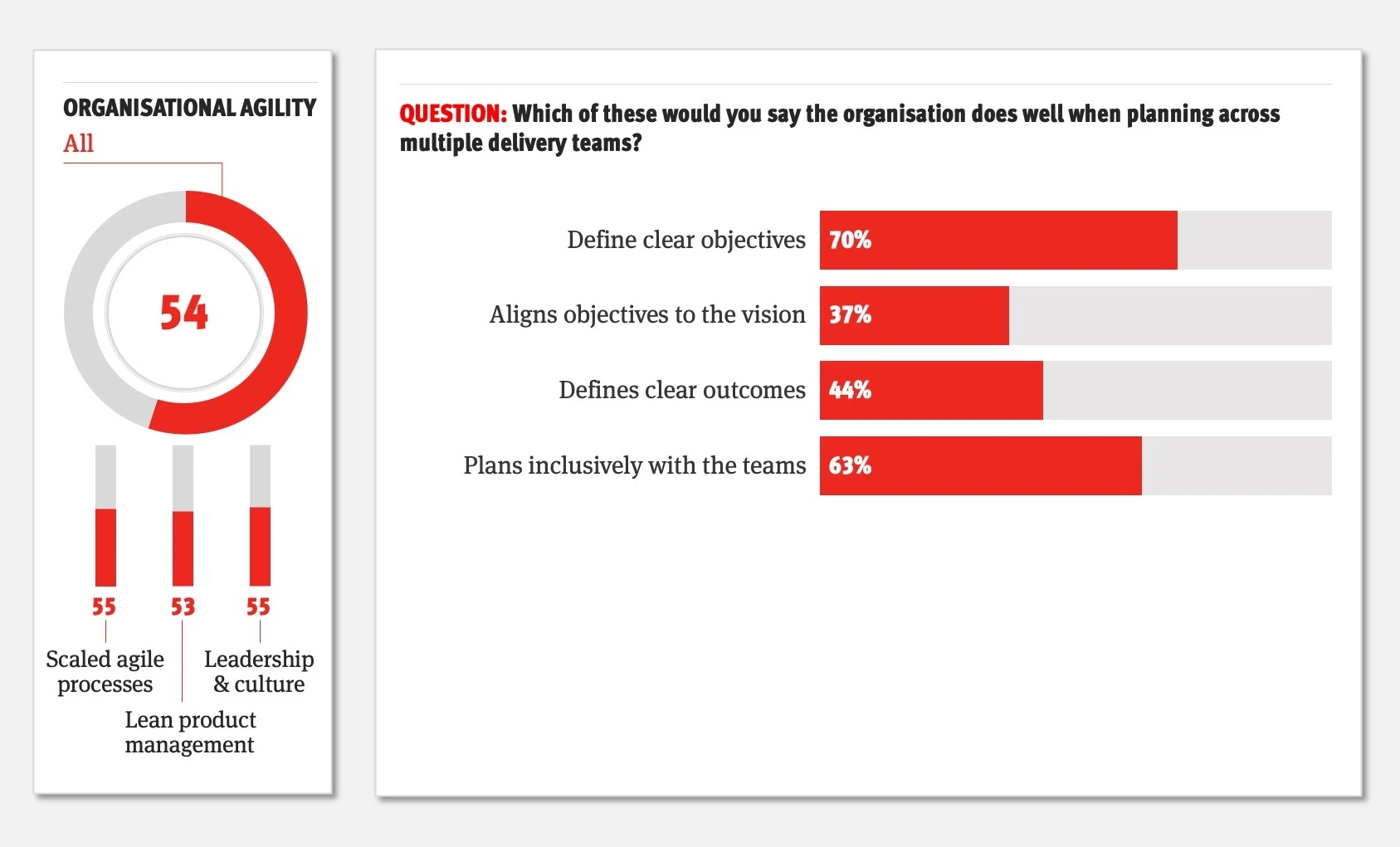
Here we can see that the organisation is doing a good job of defining the objectives and that these are shared and planned inclusively with the teams. However, they are not aligning these objectives to the overall vision of the organisation and the actual outcomes that they are looking for (and therefore how those might be measured to judge success) are not clear to the teams.
This can be very disheartening for high-performing teams as they begin to feel like they are just blindly picking the next items off a backlog without really understanding why they are building something and what the measures of a successful outcome should be. However, with those in place teams often feel more empowered to challenge what they are being asked to develop and/or offer more effective ways to achieve the same outcome.
This insight coupled with the sentiment analysis and a more in-depth review of specific comments can be instrumental in helping a leadership team look at how they can improve across these areas to get even more out of their agile engineering function.
Finally, at any level in the AMI we can start to filter by role, department, region, office, etc to really drill into strengths and weaknesses in different parts of the organisation. In many cases there can be teams who are finding that the support from the organisation is much better than in other parts of the business. And this is often where quick wins can be found in terms of aligning processes that may be different for a variety of reasons.
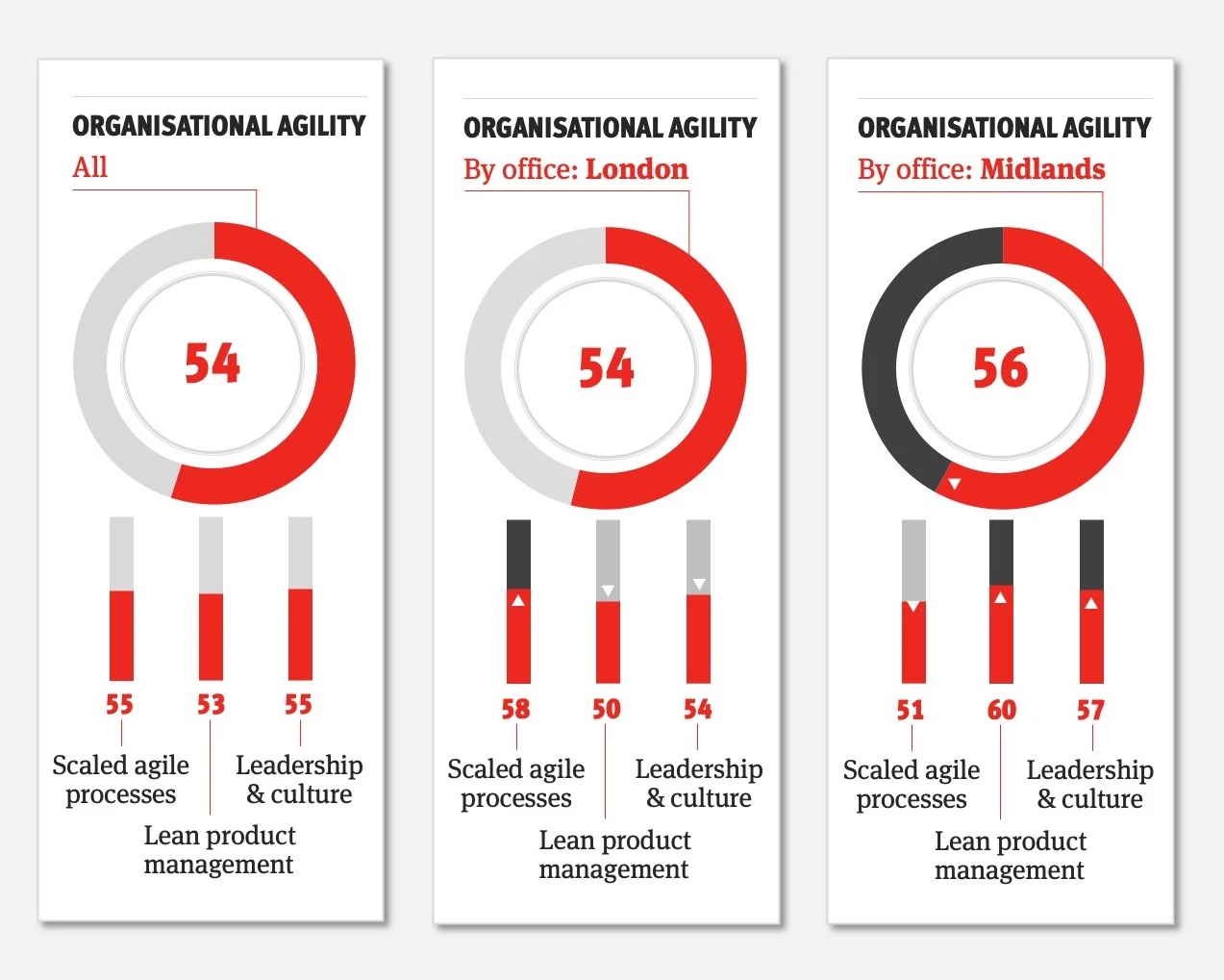
Whilst the diagram above shows the high level data filtered by office (which certainly highlights some differences that our analysts would want to look at more closely), one of the most interesting ways to filter the data in this macro attribute is by role - specifically looking at the differences in the perception across these areas from the senior leadership team in comparison to those within the agile teams themselves.
That can often be a very powerful tool when it comes to change management as a senior team will commonly have a very different perception (and sentiment) around certain capabilities.
The fifth blog in our five-part series focuses on the final macro-attribute, Culture of Innovation, and will look at how all of these pillars support a Culture of Innovation in order to drive genuine speed to market.
If you’d like a demo or more information on how you can use the Agile Maturity Index to measurably improve your agile transformation, please drop me an email at james.c@mmtdigital.co.uk.





